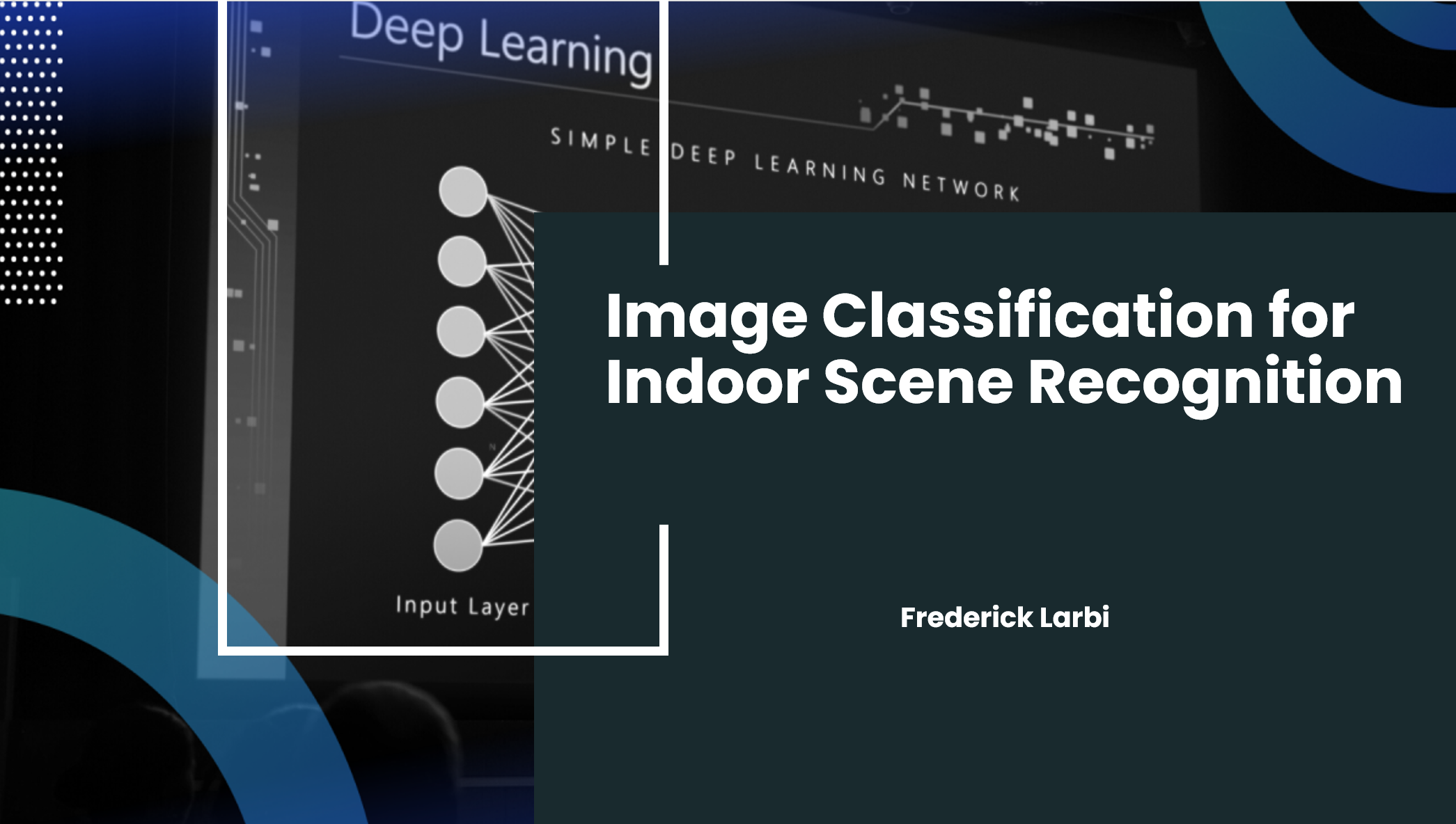In the rapidly evolving field of artificial intelligence, machine learning and deep learning techniques are crucial for extracting meaningful insights from complex datasets. This article delves into two distinct yet related projects: image classification for indoor scene recognition and sentiment analysis for restaurant reviews. These projects demonstrate the power of convolutional neural networks (CNNs) and recurrent neural networks (RNNs) in tackling real-world challenges by leveraging advanced data processing and modeling strategies.
Image Classification for Indoor Scene Recognition
The goal of the image classification project was to develop a model capable of accurately classifying indoor scenes. The process involved several stages, including data loading, preprocessing, model development, and evaluation.
Data Loading and Preprocessing
- Data Import and Initialization: Essential libraries, including TensorFlow and other image processing libraries, were imported to facilitate model development. Images were downloaded and organized into subfolders for easy access and management.
- Preprocessing: Images were resized and normalized to ensure consistent input dimensions for the neural network. Data augmentation techniques, such as random flipping, rotation, and zoom, were employed to increase the diversity of the training dataset, thus enhancing the model’s ability to generalize.
- Data Configuration: The dataset was divided into training and testing subsets, shuffled, and cached for efficient loading. Normalization was applied to scale pixel values to a range of 0 to 1, facilitating faster convergence during model training.
Model Development and Evaluation
- Baseline CNN Model:
- Architecture: Constructed with convolutional and max-pooling layers followed by fully connected dense layers. This model served as the starting point for understanding the basic capabilities of CNNs in classifying images.
- Performance: Achieved a test accuracy of 19%, highlighting the need for more sophisticated models to improve performance.
- CNN with Data Augmentation and Dropout:
- Enhancements: Incorporated data augmentation techniques and dropout layers to prevent overfitting and improve generalization.
- Outcome: Despite these improvements, the model attained a test accuracy of 16%, suggesting that additional strategies were necessary to boost accuracy.
- Transfer Learning with Pre-trained Models:
- Approach: Utilized MobileNetV3Large, a pre-trained model on a large-scale dataset, to harness its learned features. The model’s base was frozen, and additional layers were added to adapt it to the indoor scene recognition task.
- Results: This strategy significantly improved test accuracy to 56%, underscoring the effectiveness of transfer learning in leveraging pre-existing knowledge.
Sentiment Analysis for Restaurant Reviews
The sentiment analysis project aimed to classify restaurant reviews as positive or negative using deep learning models. The approach involved data cleaning, preprocessing, and model development using RNNs.
Data Cleaning and Preprocessing
- Data Cleaning: Initial steps involved removing HTML tags, non-alphanumeric characters, and short words that were unlikely to contribute meaningfully to sentiment analysis. This process ensured a clean and reliable dataset for training.
- Text Vectorization: The cleaned text data was converted into numerical form using text vectorization techniques. This step was crucial for transforming textual data into a format suitable for neural network input.
- Data Splitting: The dataset was divided into training and testing subsets, with stratification applied to maintain an equal distribution of classes.
Model Development and Evaluation
- RNN with GRU:
- Architecture: Employed Gated Recurrent Units (GRUs) to capture sequence dependencies in the text data. An embedding layer was used to convert words into dense vector representations, followed by GRU layers for processing.
- Performance: Trained over 500 epochs, this model demonstrated the capability to understand the contextual nuances of the text data.
- RNN with LSTM:
- Architecture: Utilized Long Short-Term Memory (LSTM) networks known for their ability to capture long-range dependencies in sequences. The model included an embedding layer and LSTM layers for comprehensive text analysis.
- Outcome: This configuration achieved satisfactory accuracy, showcasing the power of LSTMs in handling sentiment analysis tasks.
- Hybrid Model with GRU and LSTM:
- Combination: Integrated both GRU and LSTM layers to capture diverse patterns in the dataset. This hybrid approach maximized the strengths of each architecture.
- Results: Achieved the highest performance with an accuracy of 78%, indicating that combining GRU and LSTM layers could lead to superior results in sentiment classification.
Conclusion
These projects demonstrate the profound impact of advanced machine learning and deep learning techniques in solving complex problems like image classification and sentiment analysis. The image classification project highlighted the effectiveness of transfer learning in leveraging pre-trained models, while the sentiment analysis project showcased the potential of RNNs in understanding textual data. Future work could explore hyperparameter tuning, model ensemble techniques, and deployment strategies to further enhance these models’ performance and applicability in real-world scenarios.



